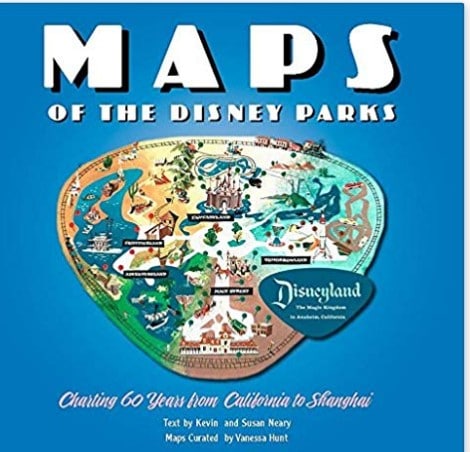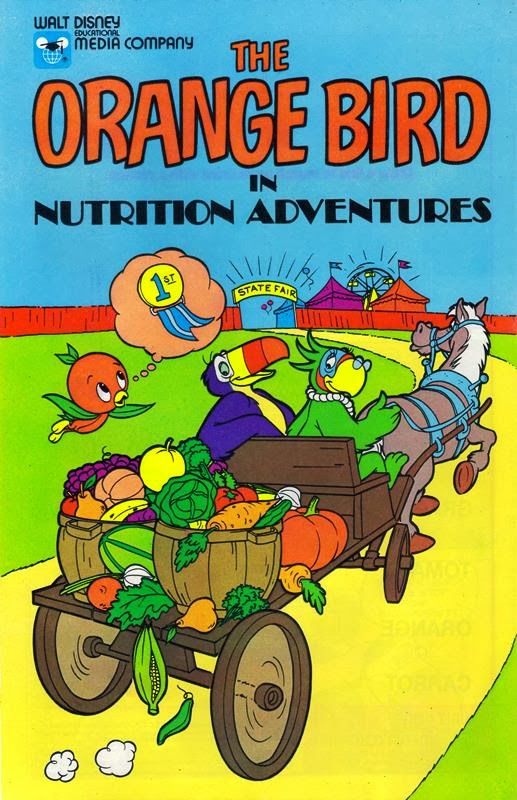Category — A Friday Visit with Jim Korkis
A Friday Visit with Jim Korkis: Robin William, Walter Cronkite, and Back to Neverland
Welcome back to Fridays with Jim Korkis! Jim, the dean of Disney historians, writes about Walt Disney World history every Friday on yourfirstvisit.net.
BACK TO NEVERLAND
By Jim Korkis
This year Disney’s Hollywood Studios celebrates its 30th anniversary. I thought it might be nice to look back at some of the things originally there in 1989 that have since disappeared.
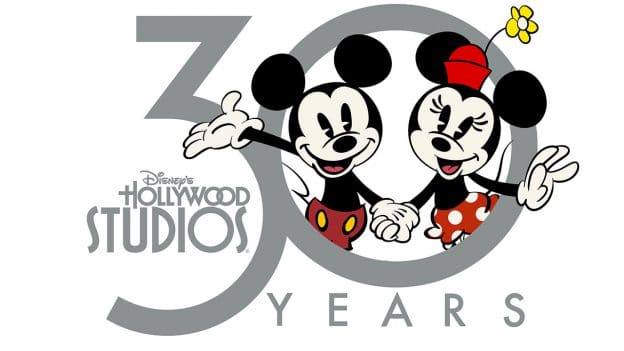
In the film, distinguished news commentator Walter Cronkite turns imaginative comedian Robin Williams into an animated character, one of the little Lost Boys from Disney’s animated feature film Peter Pan (1953), to demonstrate the different steps in animation.
The entire pavilion was outsourced to Bob Rogers and BRC Imagination Arts who had struggled on different variations to explain the process of animation for nine months when animator and director Jerry Rees was brought in to provide a new perspective. Rees directed over a dozen theme park shows including Indiana Jones Stunt Spectacular, the live action sequences for Cranium Command, and more.
Rees suggested using the authority of famed newscaster Walter Cronkite presenting the facts to play as counterpoint against the unbridled childlike enthusiasm of comedian Robin Williams for animation.
It turned out that Williams was a huge fan of Cronkite and ironically, Cronkite was a fan of Williams and they really wanted to work together.
To help sell the project to Williams and Cronkite, as well as then Disney CEO Michael Eisner, Rees brought in famed voice artist Corey Burton who did spot on imitations of both of them for a scratch track (a scratch track is a rough test before professional voices are cast). In fact, when Eisner heard it, he thought it was them. Burton was cast as the voice of Captain Hook in the animated segments.
Rees assured Robin that he was free to improvise lines as long as he got the sense of what was needed to be communicated and landed on the lines that were Cronkite’s cues.
“He gave us a wealth of material,” recalled Rees. “Especially during the metamorphosis scene. That could have been over ten minutes just by itself. We had to be brutal to edit that segment.”
Bruce Smith was working at Baer Animation doing work on Who Framed Roger Rabbit (1988). He later was the creator of the television series The Proud Family (2001) and supervising animator of Kerchak in Tarzan (1999), Pacha in The Emperor’s New Groove (2000), and Dr. Facilier in The Princess and the Frog (2009).
“Bruce Smith had done some test animation of Robin’s character because the voice work had been recorded earlier and flipped it for him when we shot the live action at the Raleigh stages in Hollywood. Robin was just delighted with it. He thought it was magical that it had his personality. When we were filming the live action scenes, I invited the animators to come and hang out and Robin was very respectful and gracious with them,” remembered Rees.
“Jerry Rees was also directing the live action as well as the animation,” animator Mark Kausler recalled. “He knew the Peter Pan feature backwards and forwards, knew every Frank Thomas, Ollie Johnston and Woolie Reitherman scene. We studied a lot of the Peter Pan feature frame-by-frame with Jerry.
“We all took turns animating all the characters. I did a nice close shot of Robin and Tinker Bell that I enjoyed. Tink was a lot of fun to draw. We were on a tight deadline, so we all pitched in and did any scenes that came our way.”
Frans Vischer animated the improvisational sequence in which Robin’s character swiftly changed into many forms, including even Walter Cronkite. The line during the metamorphosis scene where Robin transforms into Mickey Mouse and gleefully proclaims “I’m a corporate symbol” was written by Steve Moore. It stayed in the final cut because Robin loved it so much.
After seeing this short film, co-director of Aladdin (1992) John Musker told Rees that he and co-director Ron Clements wrote the part of the Genie specifically for Robin. As a tribute, at the end of the animated feature, the Genie appears in the same yellow Hawaiian shirt and Goofy hat that Robin wore in the live action beginning of Back to Neverland.
The original Magic of Disney Animation tour ended September 30th, 2003, when it was replaced with a much different version, since the Disney Feature Animation Florida unit itself had been dissolved. The tour now started with the guests seeing a live Disney show artist interacting with an animated Mushu from Mulan (1998) on a screen to explain the process of animation.
The entire pavilion closed July 12, 2014 to make way for the Star Wars Launch Bay.
* * * * *
Thanks, Jim! and come back next Friday for more from Jim Korkis!
In the meantime, check out his books, including his latest, The Vault of Walt Volume 8: Outer Space Edition, his recent Disney Never Lands, and about planned but unbuilt concepts, and Secret Stories of Walt Disney World: Things You Never You Never Knew, which reprints much material first written for this site, all published by Theme Park Press.
Follow yourfirstvisit.net on Facebook or Twitter or Pinterest!!
November 15, 2019 No Comments
A Friday Visit with Jim Korkis: From Horizons to Mission: SPACE
Welcome back to Fridays with Jim Korkis! Jim, the dean of Disney historians, writes about Walt Disney World history every Friday on yourfirstvisit.net.
EDDIE SOTTO: FROM HORIZONS TO MISSION: SPACE
By Jim Korkis
Eddie Sotto is a former Disney Imagineer who worked for the Walt Disney Company for 13 years, from 1986 to 1999. I interviewed him in June 2019 about how Horizons evolved into Mission: SPACE.
Sotto: Horizons had very low guest satisfaction ratings, to the point where people didn’t even remember which show it was. I think the topic of Horizons is great, and that retro-future attraction should be there in some form, but the economics of running unpopular shows was not an option, so we jumped in and filled the “need” with a different attraction. GE had left and there was no one to pay for Horizons. Walt Disney World wanted it gone. Sad but true. They wanted a thrill ride.
To lose Horizons is to gut the dream, or storytelling of what the whole park means and that’s powerful. Replacing Horizons with the Mission: SPACE attraction does not really fill the gap left by the hole made in the story or mission statement of the park. I think Mission: SPACE is a great pavilion and is the “science fact” challenging story of the real journey to space, not the Disneyland “Moon Ride” version we’ve all experienced.
I reviewed the Horizons numbers and listened to their concerns and what they thought would help Epcot’s image. In response, I pitched to Marty Sklar a very intense, claustrophobic “science fact” Space Capsule type attraction that was more about the heroism of the journey versus the destination. The real challenge of going to Space, a la The Right Stuff feature film.
He approved doing a mock-up of the capsule for Eisner, based on my pretending to be in the capsule pressing buttons, etc. Embarrassing, but it got us $100,000. We rented all the interior switch panels used in the movie Apollo 13, housed them in a capsule mock-up out of plywood, and put the six foot plus Michael Eisner in it, lights flashing and space footage playing outside the capsule window. He got the idea, loved it right on the spot. Florida was thrilled as well.
We developed with the ride engineers a track-based roller coaster type ride to fit the existing Horizons building, but for lots of good engineering and other reasons, it eventually evolved into the spinning centrifuge design we have today. Believe me, centrifuges are not cheap, and an entirely new ride system. That was considered a breakthrough as it generated sustained G-forces, something coasters do not do, but lift-off does.
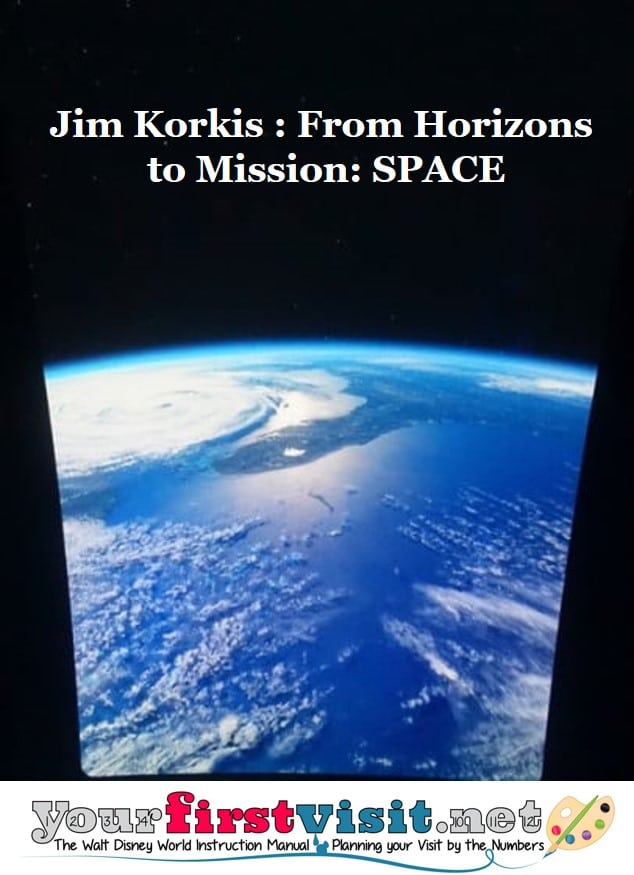
One thing I miss that was changed after I left was the story itself. The original treatment called for a moment to pause and look back at the Earth, and a rescue in space. The current version, as good as it is, was more about the continual thrill and G Forces racing around Mars, etc. and all that extra spinning may have contributed to motion sickness for some guests. Can’t know that for sure.
Maybe my first treatment was too boring, but I do like having pauses and rests in an experience (love how your banshee in Pandora pauses so you can take in that “world” before leaping off the cliff, stuff like that) to make them a bit more episodic. The unbuilt pavilion concepts never suffer budget cuts and always have the unfair advantage of being flawless in our imagination!
* * * * *
Thanks, Jim! and come back next Friday for more from Jim KorAis!
In the meantime, check out his books, including his latest, The Vault of Walt Volume 8: Outer Space Edition, his recent Disney Never Lands, and about planned but unbuilt concepts, and Secret Stories of Walt Disney World: Things You Never You Never Knew, which reprints much material first written for this site, all published by Theme Park Press.
Follow yourfirstvisit.net on Facebook or Twitter or Pinterest!!
November 9, 2019 No Comments
A Friday Visit with Jim Korkis: Disney’s All-Star Sports Resort
Welcome back to Fridays with Jim Korkis! Jim, the dean of Disney historians, writes about Walt Disney World history every Friday on yourfirstvisit.net.
DISNEY’S ALL-STAR SPORTS RESORT
By Jim Korkis
Twenty-five years ago, Walt Disney World introduced in its All-Star resorts a value-level resort experience, less expensive than the moderate and deluxe priced accommodations already available at other Walt Disney World resort hotels, to compete with nearby non-WDW hotels around the perimeter of the property.
Even though these value resorts are less expensive than other Disney-owned options, they still feature a number of Disney amenities and advantages including proximity to the theme parks.
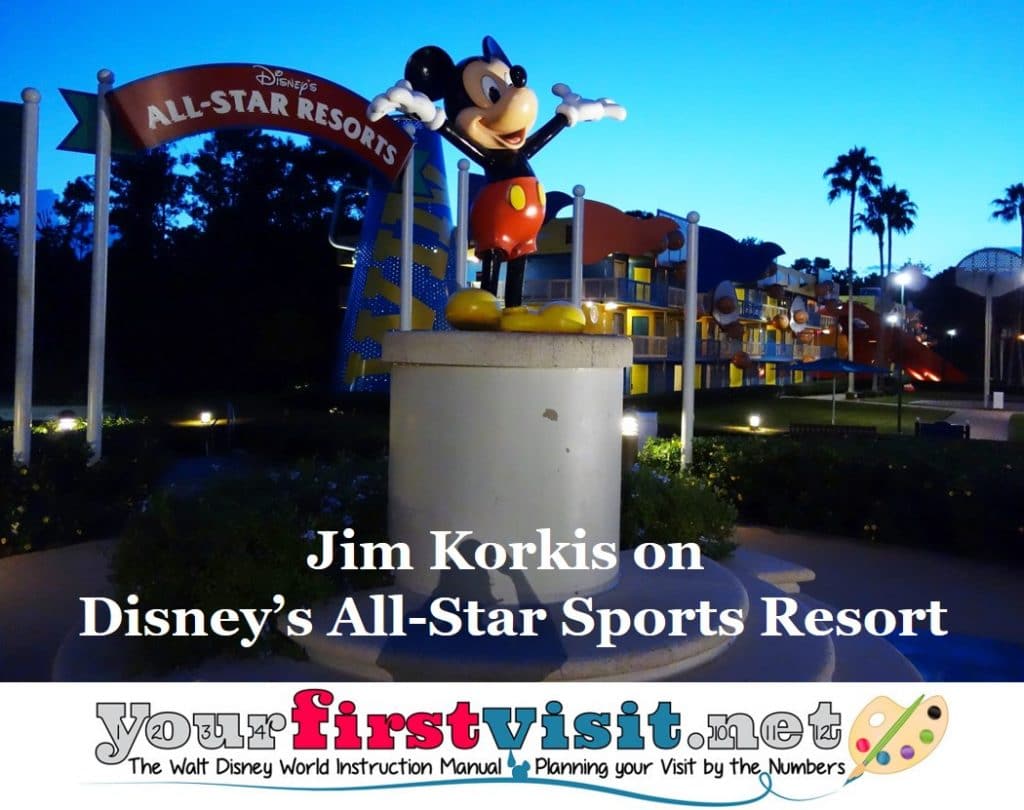
Surf’s Up! buildings opened first on April 29, 1994 followed by Hoops Hotel (May 13, 1994), Touchdown (June 26, 1994), Home Run Hotel (July 22, 1994), and Center Court (August 11, 1994).
The design, by Miami company Architectonica with the Disney Development Company, was the model for the two subsequent All-Star resorts (Movies and Music) that also featured outsized icons highlighted by neon and fiber optics to bring the themes to life.
When the resort opened, Don Robinson, general manager of the All Star Resorts, said, “The theming, architecture and landscaping all work together to make this a ‘fan’- tastic setting.”
Some of these design elements include:
- The 55-foot-tall gold star in front of Stadium Hall weighs over 55,000 pounds. The 46-foot silver star by Surfboard Bay weighs 33,000 pounds.
- At the Hoops Hotel court, there are five Washingtonia Palms “playing” a team of five Sabal Palms. The palms are arranged as if the game is about to “tip off”. Forty five foot tall megaphones house the stairwells and giant whistles mark the buildings’ entrances.
- The whistles measure 60 feet long and 20 feet high. The pea inside the whistle is approximately 9 feet in diameter. Pennants from college teams (Blue Devils, Tigers, Boilermakers, Gators) and over 70 giant basketballs roughly five feet in diameter line the railings.
- At Surf’s Up, it would take six surf dudes standing on each other’s shoulders to carry one of the oversized 38 foot tall surfboards to the beach. Approximately 950 colorful Red Snapper and Dolphin fish appear to be swimming along a “wavy” balcony. The 38 feet high shark fins that mark the buildings’ main entrances would belong to a 300 foot long Great White Shark.
- At Center Court, it would take 9,474,609 regulation-sized tennis balls to fill one of the ball cans that decorate the stairwells at Center Court. Those balls placed end to end would stretch from WDW to Key West. The tennis racquets that line the railing are approximately 51 feet tall. The “tennis” balls attached to the balconies at Center Court are almost five feet in diameter.
- At Touchdown, a football player would have to be more than 200 feet tall to be able to wear one of these giant football helmets. The football field is even decorated with giant Xs and Os, while poles and numbers on the buildings show the 40 yard line, 30 yard line, and so on.
- At the Home Run Hotel, a 40-foot tall White Ash tree would be needed to make a baseball bat the size of the ones located on the railings. It would take more than 20 million 12-ounce cans of Coke to fill just one of the large Coke cup containers.
* * * * *
Thanks, Jim! My complete review of All-Star Sports begins here. And come back next Friday for more from Jim Korkis!
In the meantime, check out his books, including his latest, The Vault of Walt Volume 8: Outer Space Edition, his recent Disney Never Lands, and about planned but unbuilt concepts, and Secret Stories of Walt Disney World: Things You Never You Never Knew, which reprints much material first written for this site, all published by Theme Park Press.
Follow yourfirstvisit.net on Facebook or Twitter or Pinterest!!
November 1, 2019 No Comments
A Friday Visit with Jim Korkis: Maps of the Disney Parks
Welcome back to Fridays with Jim Korkis! Jim, the dean of Disney historians, writes about Walt Disney World history every Friday on yourfirstvisit.net.
YOUR PERSONAL DISNEY LIBRARY (22)
By Jim Korkis
- Maps of the Disney Parks by Kevin and Susan Neary with Vanessa Hunt
A 144 page book from Disney Editions filled with pretty much nothing but maps may not sound exciting, but I thought it sounded like a terrific idea to see how the various parks have changed over the years with things disappearing and other things being added.
Unfortunately, the book seems to be a hodgepodge of material, and while it is nice to see rare concept art like Imagineer Joe Rohde’s 1991 painted aerial view of Disney’s Animal Kingdom, primarily the book is not devoted to the guidemaps that were handed out each year, but rather to the novelty maps like artist Paul Hartley’s impressionistic map that hung in Walt Disney World resort hotels in 1971, and the aerial view cartoony map he painted for the Walt Disney World Preview brochure.
While those are nice pieces of art, they do little to help me understand what the park actually looked like at that time. For me, the early Sam McKim Disneyland maps were an amazingly detailed view of what was at the park and I treasured them, especially when he was so accurate that on one map he inadvertently revealed that the Haunted Mansion show building was on the other side of the railroad tracks.
This book is indeed a beautiful art book with its full color images, but I think most readers like myself wanted to see the guidemaps they remembered and would be able to use as reference. For me, the title was misleading.
But where else will you see a full color reproduction of Morgan Ditta’s 2014 load area mural map of Neverland from Walt Disney World’s Peter Pan’s Flight attraction and see how it was inspired by the artwork of the same fantasy location by John Hench and Al Dempster for a 1953 Golden Book?
Sometimes the maps–like the 1979 Walt Disney World map–are printed so small that it is difficult to read and appreciate the details. The maps are grouped by decade, not by individual park, so to find a WDW map requires some patience flipping through the pages, and you may be disappointed with the small percentage devoted to Walt Disney World.
Each decade section is preceded by a one page introduction that fails to help the reader understand what he is about to see or reveal some treasures or connections that might be discovered. Text is very minimal and does not attempt to explain how and why maps were produced and how the presentation of the geographical material has changed over the years.
I did appreciate that at the back of the book there are short biographies of six of the artists who drew some of the maps, especially Paul Hartley and Sam McKim. While there is a short index, there is no bibliography.
Author Kevin Neary has previously written four Disney trivia books with the late Disney Archivist Dave Smith, but in recent years seems to have devoted his talents to books about baseball.
Vanessa Hunt is an Imagineer and has curated several art exhibits as well as consulting for The Walt Disney Family Museum.
As long as you buy the book knowing full well what it is and what it is not, you may find this a valuable edition to your personal Disney library.
* * * * *
Thanks, Jim! And come back next Friday for more from Jim Korkis!
In the meantime, check out his books, including his latest, Disney Never Lands, and about planned but unbuilt concepts, and Secret Stories of Walt Disney World: Things You Never You Never Knew, which reprints much material first written for this site, all published by Theme Park Press.
Follow yourfirstvisit.net on Facebook or Twitter or Pinterest!!
October 25, 2019 1 Comment
A Friday Visit with Jim Korkis: The Orange Bird in Adventureland–and the Comics
Welcome back to Fridays with Jim Korkis! Jim, the dean of Disney historians, writes about Walt Disney World history every Friday on yourfirstvisit.net.
ORANGE BIRD COMIC BOOK
By Jim Korkis
A Disney character unique to Walt Disney World is the little Orange Bird who recently returned to Magic Kingdom’s Adventureland.
In 1967, Walt Disney Productions entered into negotiations with the Florida Citrus Commission (FCC) for a Florida Citrus Growers sponsored Magic Kingdom attraction at a cost of $3 million that was a version of Disneyland’s The Enchanted Tiki Room, called the Tropical Serenade show.
In 1970, WED Enterprises (today’s Walt Disney Imagineering) created the Orange Bird character to serve as the FCC’s official mascot in promotional campaigns. Orange Bird was designed by Disney artist C. Robert “Bob” Moore and it decorated billboards, appeared in commercials, was on multiple souvenir items from sipper cups to keychains, and even had a song written about him by the legendary Sherman Brothers.
However, I think most Walt Disney World fans are unaware that the character also appeared in his own animated short and comic book.
Foods and Fun: A Nutrition Adventure (1980) was a 12-minute animated short for the Walt Disney Educational Media department produced and animated by Rick Reinert Productions.
Rick Reinert Productions was a small, independent animation studio in the North Hollywood, California area that was responsible for later producing and animating Winnie the Pooh and A Day for Eeyore (1983).
The Orange Bird short narrated by Rex Allen told the tale of the Orange Bird, who could not speak or sing but could only produce images over his head in a puff of orange smoke like a thought balloon but with a picture.
He is sad, and a nearsighted Dr. Owl gives him advice to get a good night’s sleep, a balanced diet (grain, protein, calcium, fruit/vegetables) and exercise. The bird does so and flies to the Florida Everglades where he befriends a family at the beach. The father does not want to take the bird home with them despite the protests of his two children, but changes his mind when he is saved from going out to fish on an unsafe pier by the little bird.
There is a family picnic on the beach where the family sings about the joys of a balanced diet while the Orange Bird makes a healthy sandwich.
To tie in with the release of this animated film, Walt Disney Educational Media produced a supplemental comic book, very similar to other comics it produced at that time, including Mickey and Goofy Explore Energy and Mickey and Goofy Explore Business.
Orange Bird in Nutrition Adventures (1980) is a 32-page comic book with three separate stories written by Diana Gabaldon and drawn by Tony Strobl. Gabaldon is an award-winning, best-selling novelist. Strobl worked as a Disney animator on several features starting in 1938 before moving over into drawing comic books, especially stories featuring Donald Duck.
As animator Dave Bennett remembers, “Tony Strobl came to our studios [Rick Reinert Productions] for as much reference material on the Orange Bird as he could carry! Disney had not created an official model sheet.”
The comic book included three stories:
- “Helping Out” (11 pages) where Orange Bird and his friends Toucan and Macaw agree to help Farmer Brown with his chores and learn the necessity of a healthy breakfast in order to get the day’s work done;
- “A Day Off” (11 pages) has Toucan, Macaw and Orange Bird going on a relaxing picnic to Coconut Island but a series of misadventures including monkeys stealing some of their food results in Toucan realizing he should have stayed home;
- “Fair Day” (10 pages), Toucan, Macaw and Orange Bird go to the State Fair but a black bird competitor steals all the prize vegetable entries and hides them in the human cannonball’s cannon. When the cannon goes off, the vegetables scatter throughout the air and Orange Bird makes a healthy vegetable salad for everyone.
In 2012 the Orange Bird returned to Adventureland.
* * * * *
Thanks, Jim! And come back next Friday for more from Jim Korkis!
In the meantime, check out his books, including his latest, Disney Never Lands, and about planned but unbuilt concepts, and Secret Stories of Walt Disney World: Things You Never You Never Knew, which reprints much material first written for this site, all published by Theme Park Press.
Follow yourfirstvisit.net on Facebook or Twitter or Pinterest!!
October 18, 2019 No Comments
A Friday Visit with Jim Korkis: Requiem for the Muppets in Liberty Square
Welcome back to Fridays with Jim Korkis! Jim, the dean of Disney historians, writes about Walt Disney World history every Friday on yourfirstvisit.net.
THE MUPPETS PRESENT…
By Jim Korkis
[Note from Dave—this show closed October 5, 2019]
Disney acquired the rights to Jim Henson’s Muppets in February 2004 and tried to reboot the franchise starting in 2008 with new movies and television appearances. Henson had entered into negotiations with the Disney company for the franchise before his death in 1990 resulting in the characters being incorporated into shows at Disney MGM Studios.
However, after Henson’s death, Disney was unable to finalize the acquistion from the Henson family but were able to arrange a license for the Muppet*Vision 3-D attraction. With Disney’s purchase in 2004 the word “Muppet” became a Disney trademark.

Jim Lewis, who had written extensively for The Muppets for thirty years, was brought in for consultation, and the show expanded to include Kermit, Miss Piggy, Fozzie Bear, Gonzo and two of Gonzo’s chicken friends. James Silson and Tara Anderson were co-directors of the show. Brendan Milburn and Valerie Vigoda wrote a new song for the shows.
The Muppets Present…Great Moments in American History premiered in Liberty Square at the Magic Kingdom on October 2, 2016 with two different shows, The Declaration of Independence and The Midnight Ride of Paul Revere. The Muppets perform in the upper three windows above the Heritage House gift shop so that it appears as if it is three interconnected television screens.
Because of the distance to the guests below, the puppets were made about five percent larger than the traditional Muppets and were built by the same craftspeople who build the characters for television and film. The pre-recorded voices are provided by Steve Whitmire (Kermit the Frog), Eric Jacobson (Miss Piggy, Fozzie Bear, Sam Eagle) and Dave Goelz (Gonzo) and the Muppets’ actions are synchronized by live puppeteers to the voice track.
The puppeteers are also responsible for several costume changes during the show. Each show lasts approximately ten minutes and is performed multiple times during the day.
The Declaration of Independence show has Sam appearing in a circular portal at the top of the Hall of Presidents and interacting with a live James Jefferson (aka “JJ”), the Town Crier of Liberty Square down below who leads the guests in different responses during the show. As they attempt to share the events surrounding the drafting of the famous document, the other Muppets appear in the Heritage House windows.
These other Muppets portray historical figures Thomas Jefferson (Kermit), John Adams (Gonzo) and Benjamin Franklin (Fozzie). Miss Piggy is irritated that there are no female roles and decides to change King George III and later George Washington into “Georgette” for her to perform as those characters.
Midnight Ride of Paul Revere takes place solely in the windows above Heritage House and is a very loose adaptation of Henry Wadsworth Longfellow’s famous poem Paul Revere’s Ride. Kermit portrays Revere and has a stick horse whose face surprisingly animates as another Muppet.
“The show really appeals to everybody, across generations, because the Muppets have such a wonderful history,” said Tara Anderson. “Parents are going to watch the show with their children and they’re both going to laugh! It’s the Muppets we know and love, but new.”
* * * * *
Thanks, Jim! And come back next Friday for more from Jim Korkis!
In the meantime, check out his books, including his latest, The Unofficial Walt Disney World 1971 Companion: Stories of How the World Began, and Secret Stories of Walt Disney World: Things You Never You Never Knew, which reprints much material first written for this site, all published by Theme Park Press.
Follow yourfirstvisit.net on Facebook or Twitter or Pinterest!!
October 11, 2019 No Comments


